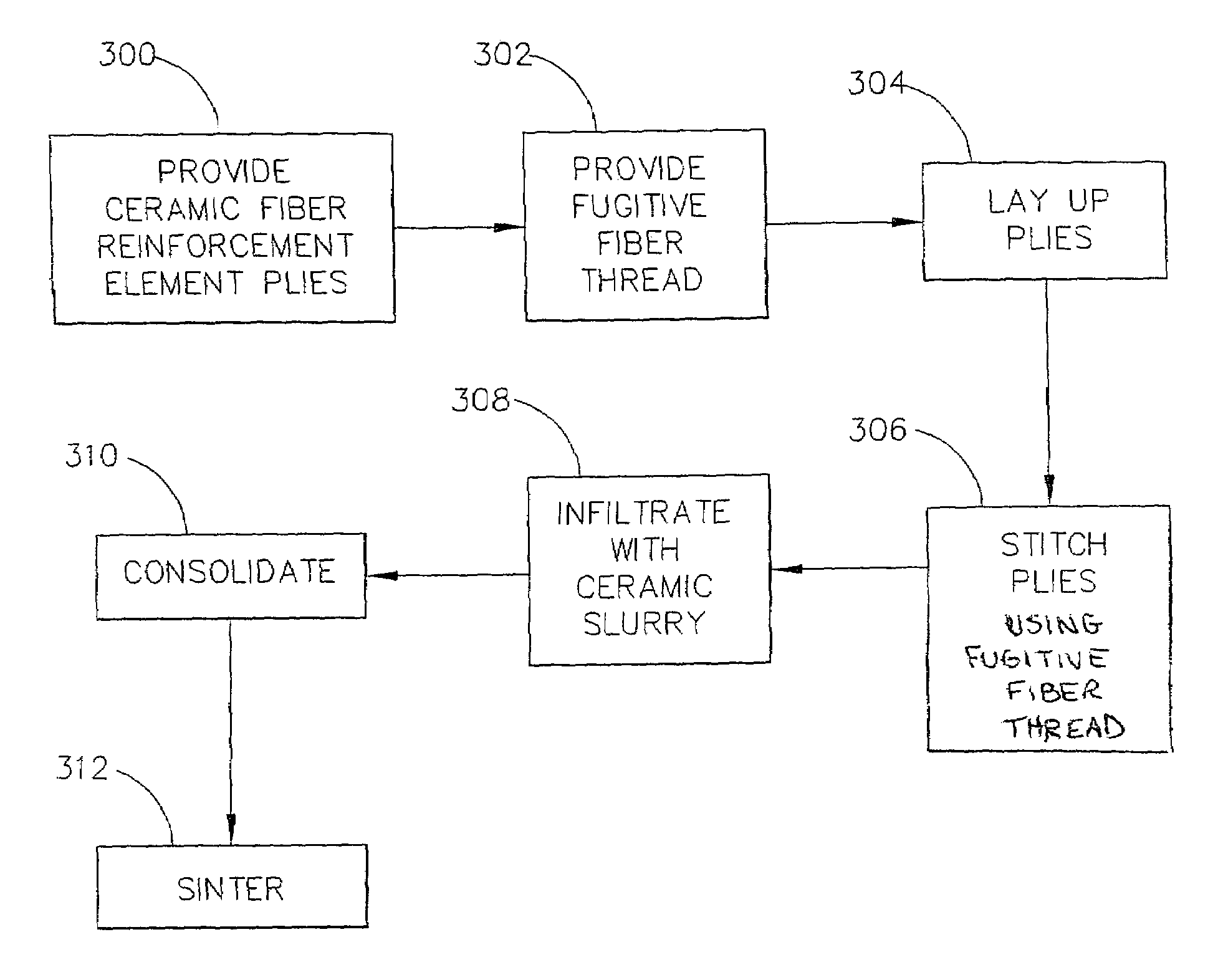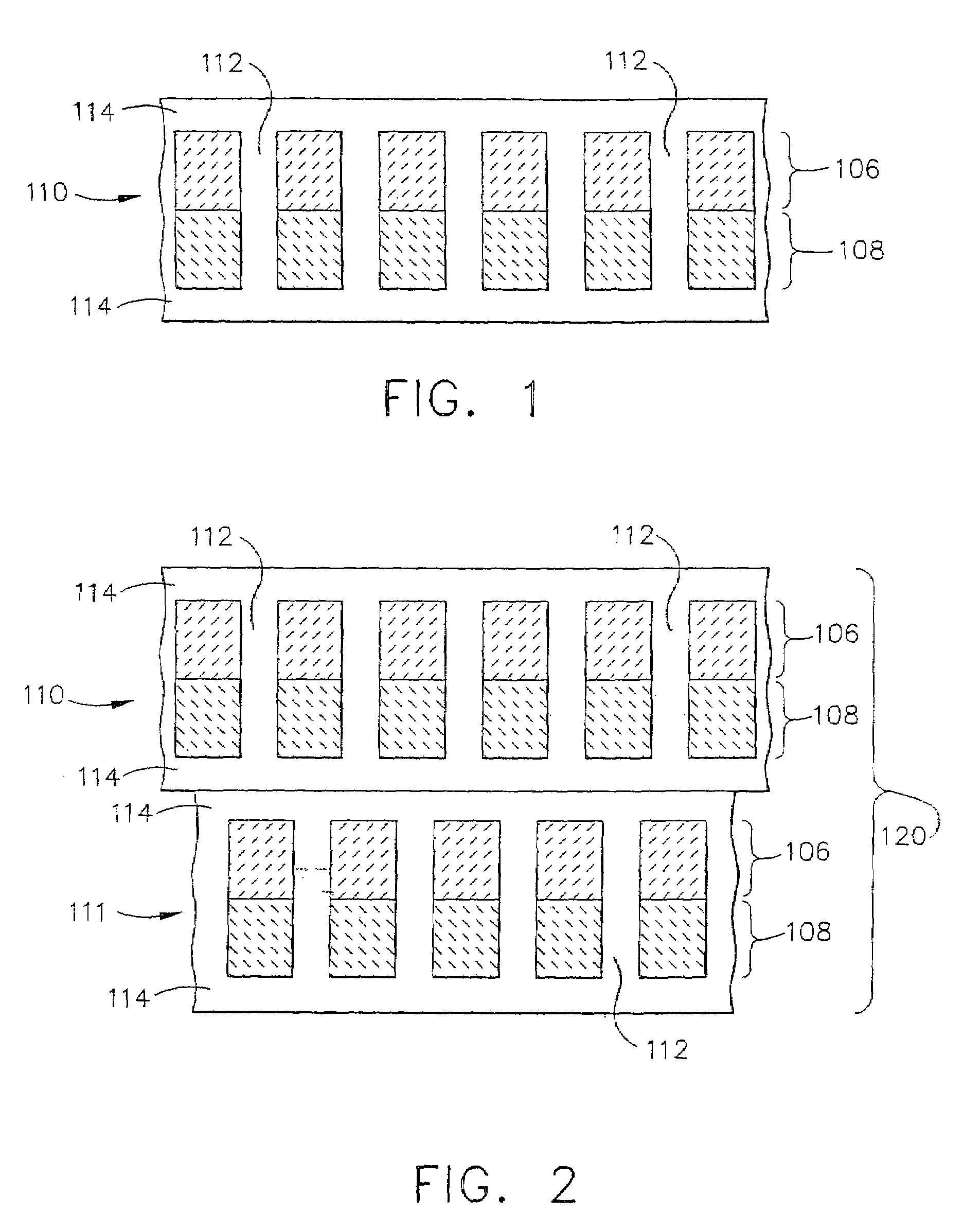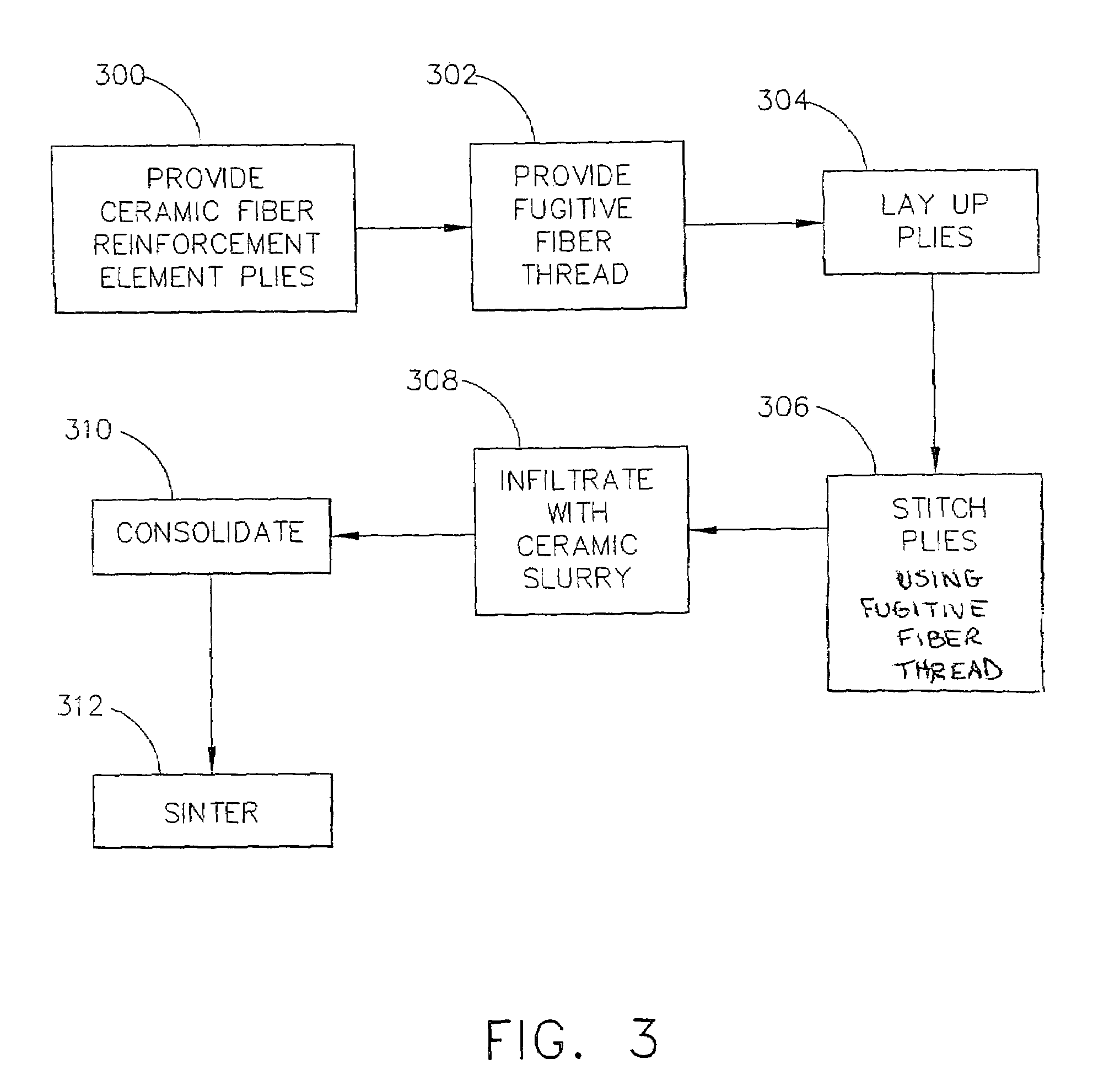Method of making porous ceramic matrix composites
a technology of porous ceramics and composites, applied in the field of ceramic structures, can solve the problems of high thermally induced stress in the component, low thermal conductivity, and a large number of holes, and achieve the effect of increasing cooling flow capabilities
- Summary
- Abstract
- Description
- Claims
- Application Information
AI Technical Summary
Benefits of technology
Problems solved by technology
Method used
Image
Examples
example 1
[0033]In Example 1, evaluated in connection with the present invention, a Nextel® 440 ceramic cloth was cut into 4-in square plies. Nextel® 440 is made from Al2O3, SiO2, and B2O3 at varying percentages, and has both crystalline and glassy phases—the glassy phase helps the fiber retain strength after exposure to high temperature, but also weakens the fiber when stressed at high temperature. is a registered trademark for ceramic textiles, and is owned by 3M Corporation, St. Paul, Minn., USA. On one ply, lines were inked on the surface about 0.75 cm apart from each other either along the warp direction of the ceramic cloth ply (1D) or in both the warp and fill directions (2D). Four plies were stacked together with the top ply being the one with the inked pattern. The stacked plies were stitched along the inked pattern with a #61 rayon thread on a ConSew® Premier Model No. CN3115RB sewing machine at a 2.5, 3.5 and 4.5 setting. Consew® is a registered trademark of Consolidated Sewing Mac...
example 2
[0034]In Example 2, a Nextel®440 ceramic cloth was prepregged with silica powder, SiO2-yielding polymer slurry previously described in Example 1. The prepregged cloth was cut into 4 inch square plies, and 4 of these plies were stacked together as well as 2 sets of 2-ply thick laminates. A 1D patterned lines 0.75-cm apart were inked onto a 4-in square sheet of plastic. Additionally, a 2D pattern with lines 0.75-cm apart were inked onto 2,4-in square plastic sheets. A 1D patterned plastic sheet was placed on top of the 4-ply thick stack while the 2D patterned plastic sheets were placed on both of the 2-ply thick stacks. The stacked prepreg lay-ups were stitched along the inked pattern with a #61 rayon thread on a ConSew sewing machine with a machine setting of 3.5. The two 2-ply stitched lay-ups were offset from each other about 0.37 cm in both the warp and fill cloth directions, stacked and lightly pressed together to stabilize the offset. The stitched prepregged stacks were bagged a...
PUM
| Property | Measurement | Unit |
|---|---|---|
| temperature | aaaaa | aaaaa |
| pressure | aaaaa | aaaaa |
| temperature | aaaaa | aaaaa |
Abstract
Description
Claims
Application Information
 Login to View More
Login to View More - R&D
- Intellectual Property
- Life Sciences
- Materials
- Tech Scout
- Unparalleled Data Quality
- Higher Quality Content
- 60% Fewer Hallucinations
Browse by: Latest US Patents, China's latest patents, Technical Efficacy Thesaurus, Application Domain, Technology Topic, Popular Technical Reports.
© 2025 PatSnap. All rights reserved.Legal|Privacy policy|Modern Slavery Act Transparency Statement|Sitemap|About US| Contact US: help@patsnap.com



